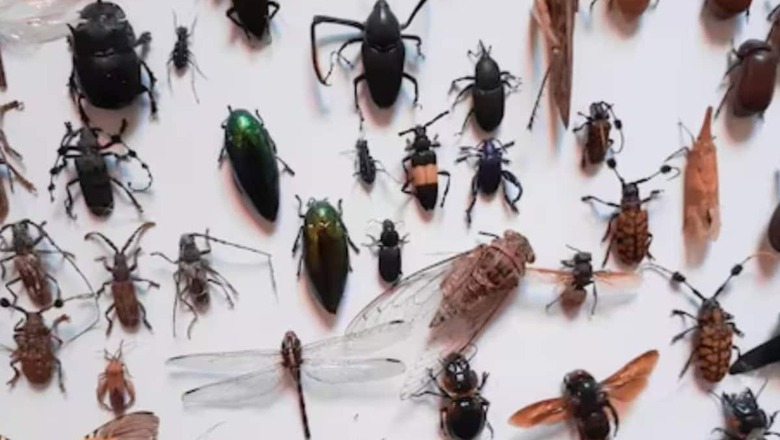
views
In the late spring of 2024, the United States is poised to witness an extraordinary natural phenomenon as billions of periodical cicadas prepare to emerge from the ground. This event, which occurs in cycles lasting 13 to 17 years, has not been witnessed in over two centuries. The simultaneous emergence of two distinct groups, Brood XIII (13) and Brood XIX (19), was last observed in 1803.
According to a BBC report, Wisconsin and Illinois are gearing up for an impending bug invasion. Billions of these red-eyed, winged insects are expected to swarm the air, creating a spectacle that will coat branches, signposts and sidewalks for about a month. Cicadas, some of the world’s oldest insects, have a unique life cycle that involves spending the majority of their lives underground, feeding on tree roots. When it is time to surface, they construct mud tubes, known as cicada huts, before transforming into winged adults.
In a single acre of land, up to 1.5 million cicadas can emerge, with the potential for tens of billions in total.
Interestingly, the 13 and 17-year cycles last linked up 221 years ago. According to UNILAD, Mathematician Professor Hannah Fry explains in a TikTok video, “Thirteen years and 17 years are special because they’re both prime numbers, which means it’s really hard for a predator to have a cycle that syncs up with them. Also, they almost never synchronize with each other – 13 and 17, kind of missing each other – apart from every 221 years.”
After emerging from the ground, these insects have a short lifespan of only four to six weeks. Their primary objective during this above-ground adventure is to find a mate. Male cicadas produce a loud clicking noise, reaching noise levels comparable to a lawnmower or a passing jet plane, to attract females. Matt Kasson, an associate professor of forest pathology and mycology at West Virginia University, revealed to NPR that the fungus Massospora cicadina causes cicadas “to be hypersexual and to have prolonged stamina and just mate like crazy.”
The last time such a synchronised emergence occurred was in 1803, a historic year for the United States. This was the year of the Louisiana Purchase when the U.S. acquired 530 million acres of land from France for $15 million (Rs 1.25 billion). This massive expansion of U.S. territory westward occurred when many states, including Texas and California, were still not part of the union. During the previous emergence of cicadas, Thomas Jefferson was the President of the United States, and the Napoleonic Wars were on the brink of erupting in Europe.




















Comments
0 comment